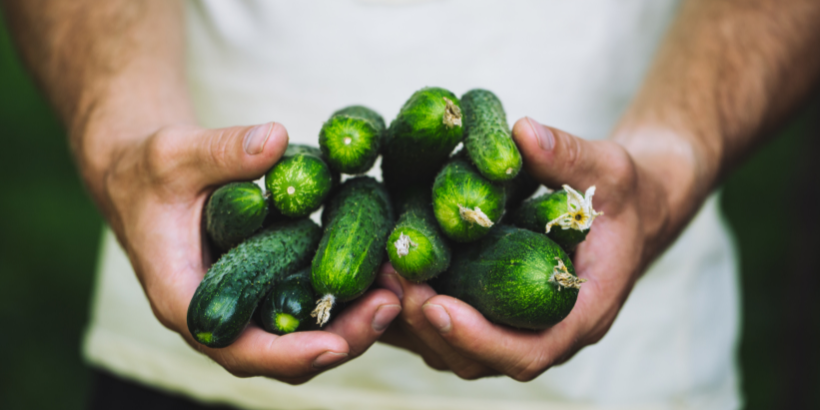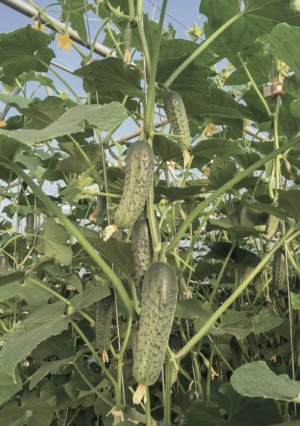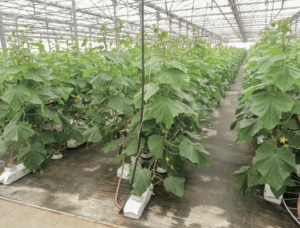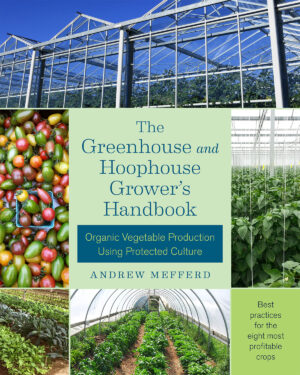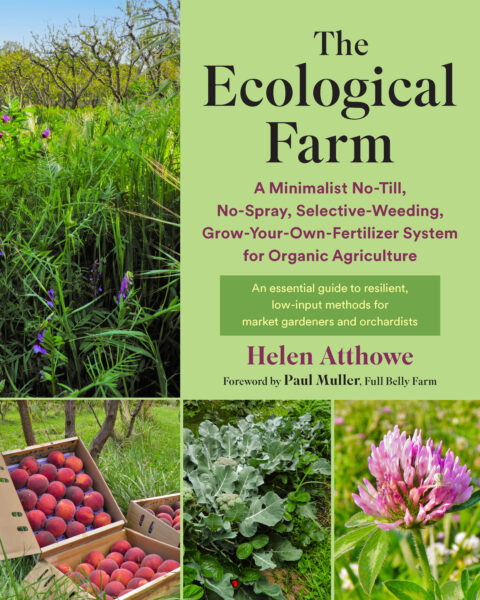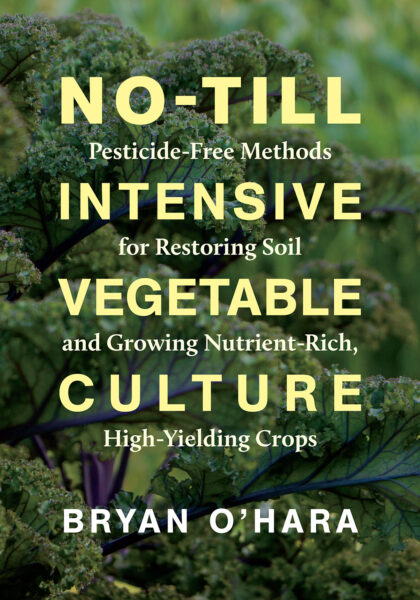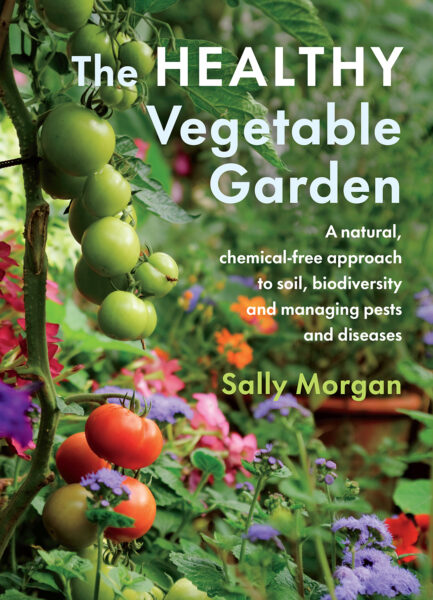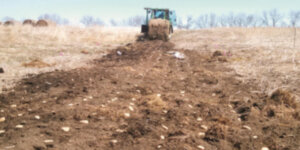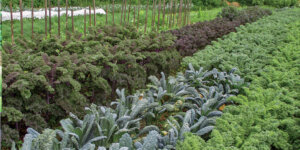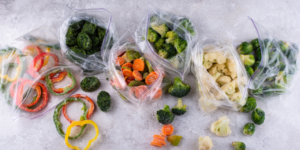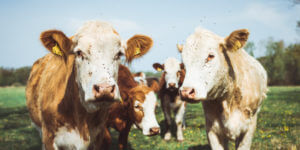Capturing the Crunch: How to Harvest and Store Cucumbers
As the weather heats up, now’s the perfect time to grow and pick cucumbers! With these easy tips and tricks, you’ll be prepared to successfully harvest and store the cucumbers you grow until they’re ready to eat.
Unless otherwise noted, all photographs copyright © 2017 by Andrew Mefferd.
The following is an excerpt from The Greenhouse and Hoophouse Grower’s Handbook by Andrew Mefferd. It has been adapted for the web.
The Resilient Cucumber
Cucumbers are a very fast-growing crop. When grown quickly at high temperatures, they can take as little as twenty-one days to go from seed to transplant stage, and another twenty-one days to go from transplant to first harvest. Under hot conditions, mature plants can grow 4 inches (10 cm) or more in a day. As long as they are kept well watered, cucumbers plants can tolerate hotter temperatures than tomatoes.
The fast growth rate means cucumbers may require more frequent attention than the other vining/fruiting crops. During periods of fast growth, cukes may need pruning or trellising more than once a week. Small-fruited varieties like cocktail cucumbers may need to be picked once a day or more to keep them from getting too big.
Harvesting Cucumbers
Figure 10.8. A pickling cucumber being grown by the high- wire (single-leader) method in the author’s hoophouse.
Frequency of harvest in cucumbers is determined both by variety and by how fast the plants are growing. The goal of cucumber harvest is to pick the cucumbers once they have reached a minimum size and degree of maturity, before they have become overmature. There is some latitude in when to pick cucumbers, since they are picked when horticulturally mature, not botanically mature (in other words, ripe).
Consider the difference between picking a ripe tomato or pepper (skin has changed color, seeds are mature) and picking a cucumber (based on size, not ripeness; seeds should not be mature if present at all). In greenhouse cukes, the matter can be confused, since they are parthe-nocarpic and gynoecious and don’t set seed. But we can still say that overmaturity corresponds to the stage of maturity in a cucumber when it would otherwise have hard seed. This definition still allows for some latitude in when to harvest.
A particular variety may be harvested slightly larger or smaller, once it has reached horticultural maturity, based on grower preference, buyer preference, and stage of growth. Cucumber plants in a more generative stage will tend to produce longer, larger fruits.
Cucumber Maturity
Overmaturity in cucumbers corresponds to bloating. This is because cucumbers grow to a certain length before doing most of their diameter expansion. So an overmature cucumber is one that has reached its final length and increased too much in diameter. You want to pick cucumbers at the desired length, before they have begun bloating, because flavor will start going down at that point.
Since protected culture cucumbers are seedless, overmaturity is not as much of a problem as in field cucumbers, where cukes will begin to have hard seed when picked overmature. But the best eating quality in cucumbers comes after the cuke has filled out and reached its optimal length, and before it has started to bloat.
If you are growing a new variety and are unsure where the sweet spot of maturity is, undermature cukes tend to look slightly angular because they haven’t filled out completely yet, like an underinflated balloon. And an overmature cuke will have stopped growing in length and started expanding outward only. Most cukes are at the right diameter when they no longer have pointy ends and are cylindrical, but before their shape has begun to inflate. Ultimately, there is some discretion in when to pick cucumbers, so show workers examples of what you want them to pick and not pick.
Post-Harvest: Storing Cucumbers
It’s important to get cucumbers out of the sun as soon as possible, since their dark skin absorbs a lot of heat the longer they are left out. Store cucumbers at 55 to 57°F (13–14°C), and at 95 percent humidity.
As long as they are held under ideal post-harvest conditions for only a few days until sale, you can retail long European cucumbers or put them in a CSA box without shrink-wrapping. For a produce sales chain much longer than that, or wholesaling where handling is out of your control, shrink-wrapping should be used.
Cucumber Wrapping and Packaging
Figure 10.10. A young crop of long European greenhouse cucumbers grown umbrella-style. The plants have just reached the top wire, which is 6 to 7 feet (1.8–2.1 m) high, and are soon to be topped to let the laterals develop.
On a very small scale, stretchy plastic wrap may be used to wrap the cukes, with the ends twisted to seal in moisture. On a medium scale, machines are available that will speed up the process. The simplest of these can be loaded with a large roll of plastic wrap, with a hot wire to cut it. A person stands in front of the machine and wraps each cucumber, and when they lift the wrapped cucumber the hot wire cuts the plastic.
On a larger scale, cucumbers are put into a loose tube of plastic wrap and then sent on a conveyor belt through a heater, which shrinks the wrap to fit the cucumber. These have a very high output and are much more expensive than the other options.
Most American slicer and pickling types do not need shrink-wrapping, because their skins are thick enough to prevent dehydration. Most of the mini/midi/cocktail thin-skinned cucumbers can benefit from some type of dehydration protection, just like long Europeans.
This packaging may also be useful to keep the cucumbers together in a marketable unit, since the smaller types are usually sold in groups rather than by the piece or the pound. Shrink-wrapping cocktail or snack cucumbers to a small cardboard tray is a common industry method that also has nice presentation. Bagging small-fruited cukes for sale may be a more practical option for smaller growers. The drawback is that sometimes the bag can fog up, making the cucumbers hard to see.
Recommended Reads
Recent Articles
If you want to improve your soil, one of the most important things you can do is to plant cover crops. But they need to be selected with a purpose.
Read MoreWeeds are the bane of every farmer and gardener’s existence. Before you go crusading against the weeds in your garden follow these tips and tricks!
Read MoreTry your hand at preserving veggies by freezing them! Freezing vegetables is a quick, simple way to preserve them for winter meals.
Read MoreCows can help rebuild soil and restore land to its rightful state—improving carbon sequestration, natural water cycles, and soil fertility and nutrient density.
Read MoreBecome more resilient when the temperatures are on the rise to reduce heat stress and produce food in even the most arid environments.
Read More
